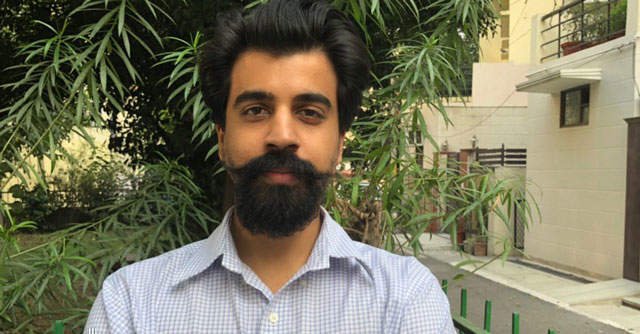
The IT Rules 2021 - regulating online mediums or restricting user freedom?


There is no denying the need for better regulation of online platforms, especially social media, in this pursuit, the government released the Information Technology (Intermediary Guidelines and Digital Media Code of Ethics) earlier last week. Not discounting the need for regulation in this sphere certain concerns were raised regarding the overbearing nature of these rules and how it may lead to the rights of individuals being curtailed.
An earlier version of the rules, released to the public in 2018, received criticism pertaining to the provisions that mandated proactive monitoring and traceability. However, the rules notified this week contain these mandates, along with provisions that regulate digital news media and OTT content streaming platforms.
One of the key aspects that the rules deal with is the cornerstone of our digital freedom - ‘safe harbour’.

Safe harbour is a right accorded to intermediaries that shields them from liability with regard to content posted by third parties. The guidelines in place prior to this notification i.e. the IT (Intermediaries Guidelines) Rules, 2011 acknowledged the significance of this right and core tenets of user privacy and platform security, thereby nurturing an open and progressive internet ecosystem. However, the new rules make the right conditional to requirements of automated proactive monitoring and censorship of illegal content which raise concerns regarding the privacy of individuals. Proactive monitoring, which will take effect by the use of automated tools, may not result in a process that is nuanced enough to truly adjudge the nature of content being deemed illegal or offensive.
The rules place a traceability requirement on significant social media intermediaries, to identify the first originator of a particular message, in a bid to tackle challenges like fake news and the proliferation of CSAM (Child Sexual Abuse Material) on the internet.
Such a requirement in order to be fulfilled would entail the end of the ‘end-to-end encryption’ feature of many platforms, one that they are often sought after for which is likely to have repercussions on the privacy, safety and security of citizens, and also the national security of the State.

Technologically advanced unethical actors may utilise this ‘backdoor’ or access which will entail digital platforms, thereby citizens using them, susceptible to cyber attacks. It would also compel these intermediaries to collect intrusive metadata on conversation patterns that can be abused by bad actors. Additionally, the means itself would be ineffective in solving for the end given the fact that the originator of a message on one platform may not be the actual originator of the message. Further, if there is no associated information provided by law enforcement while making these requests, it would virtually be impossible to trace the originator without necessarily seeing the content of the message. It is pertinent to note that the TRAI had at an earlier occasion advised against the breaking of such encryption practices owing to the security concerns it presents. Such provisions in the absence of a robust data protection framework and surveillance norms also violate the right to privacy and speech of internet users.
The rules also lay down certain requirements on digital and online media, as per the mandate these applicable entities are to include digital news media and OTT content (video) streaming platforms. They also establish a three tier regulatory structure, a combination of self-regulation by platforms and oversight by the central government. Early concerns regarding this aspect of the regulation include concerns of excessive delegation on the part of the government by notifying these as rules instead of a parliament made law.
The aspect of news media, covered in these rules, also notably lies outside of the Parent Act (IT Act) based on which these rules have been notified. Though in substance the rules bring out certain welcome changes such as legal requirements to classify content (based on the code prescribed), display content descriptors in a manner that ensures users are aware and place access controls on age-restricted content for better child safety.

However, these rules are likely to run into a series of implementation hurdles as they employ overbroad language which would allow for broad interpretation and varied application.
The term “news and current affairs content’ used to signify digital news media is wide and raises concerns regarding the assessment of such entities for the purpose of the regulation. The prescribed code of ethics also provides fewer actionable clauses as opposed to broadly worded guidelines once again leading to confusion. Though the Minister, in his press conference, alluded to the new regulatory mechanism as “a soft touch regulation”, it is marred by having the Government, in the form of an inter-departmental committee, as the final adjudicator.
The Government would have powers to censure, demand display of apologies or warnings via the final oversight mechanism at the centre. Considering that the regulation of video streaming platforms and news media was not dealt with in the earlier Draft Rules released by the Government such drastic changes in regulation, in the absence of a wide consultation process with news media, OTT platforms and civil society is alarming.

At the outset, the newly notified guidelines for social media and OTT platforms are well intentioned and arrive at an opportune time where Indian society has been plagued by issues of fake news, hate speech and misinformation. However, they require to be fine-tuned to do so in a manner that protects user freedom and the openness of the internet. It is imperative that any initiative taken is in accordance with legal and constitutional principles and respects the rights guaranteed to the citizens of India.

Kazim Rizvi
Kazim Rizvi is the founding director of The Dialogue. The views in this article are his own.
